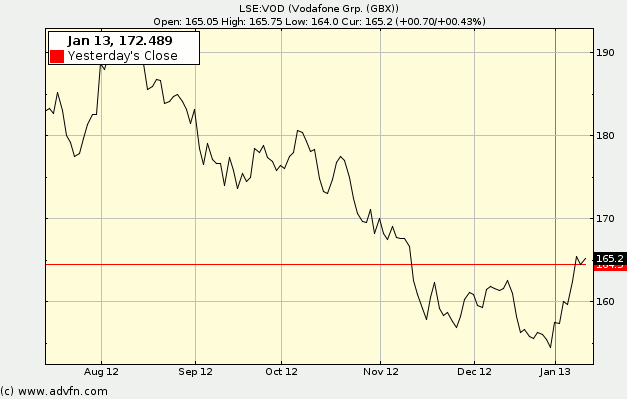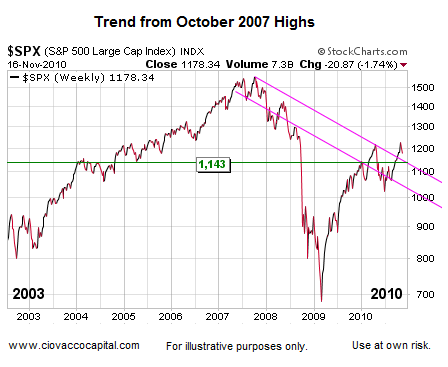How to find stock market trends
Post on: 14 Апрель, 2015 No Comment

Successful traders likely have been familiar with the importance of trends in trading since a group of merchants gathered under a buttonwood tree in New York to trade stocks. Trend trading not only represents the potential for a big move and profit, but also the path of least resistance for price as an established trend is likely to continue.
Newtons First Law of Physics states, An object in motion tends to stay in motion with the same speed and in the same direction unless acted upon by an unbalanced force. This is the compelling basis for trading trends as they are likely to continue unless acted upon by an outside force (such as disappointing earnings, a market panic, geopolitical events, etc.), and its the reason why some trends stay in place for years.
The ability to identify trends and trade them effectively is fundamental to trading success. While there are other methods that have been successful, like fundamental analysis, they can be subjective, whereas trend following has stood the test of time.
Trend trading challenges
If trading trends is the cornerstone to successful speculation and big returns, then you have to wonder at some point, why arent most traders good at it?
Capturing trends is difficult. Inexperienced traders often do not have the capital to trade trends, and professional traders are adept at running critical price points to make quick profits on the accounts of non-professional traders.
The problem with trading trends is threefold: First, trend trading can be difficult to exploit for profit with some trading approaches. Breakout methods, for example, can lead to explosive gains but also suffer a series of false starts where an entry is signaled but then rejected by the market. This causes a series of stop losses to be hit that can be a demoralizing experience, not only because the trader loses money but because it drains self-confidence.
Second, most traders do not have enough capital to trade trends over the long term. For example, the Turtle Trading Method, made famous by Richard Dennis, a Chicago futures trader and trend follower himself, was a simple system of buying or selling commodities when price reached a 20-day high or low. Dennis, at one time, also had to liquidate one of his funds because the drawdown had hit 50% using a variation of this method. If a fund worth millions of dollars and led by one of the most experienced commodity trading advisors in the world couldnt weather a downturn in performance, then how could a trader with a modest account?
Finally, most floor traders on the stock and commodity exchanges are familiar with these types of trend-following methods. If a stock is making a new 20-day price high, then the floor traders are aware of it also. Floor traders run through these trend followers price entry stops where they then cover their positions, take profits, and quickly take long positions as they ride the market back up as it resumes its upward trend, making money both ways.
Can you begin to understand how difficult it can be to trade trends and why so many traders struggle with it?
Enter price patterns
Fortunately, price patterns can help level the playing field when trying to capture big moves in price and, particularly using support and resistance, help you time your entries.
Support and resistance lines have been one of the most reliable price patterns for stock traders because they offer a quantified price point for entry. When a price makes a significant low or high and then comes back to retest that low or high, it indicates the resumption of the primary trend. Because of their high reliability, many traders will trade these levels almost exclusively.
However, when combined with a simple indicator, price patterns effectiveness can be leveraged into a much bigger potential trade.
100 S/R trend trading method
Using a 100-day simple moving average (SMA) on a price chart, these are the rules for this setup:
For longs:
1) 100-day SMA is trending upward.

2) Price is above the 100-day SMA.
3) Price declines to make a significant low.
4) Price rises from that low price point and then retests that low no less than 10 days later.
5) Enter on the close of the first bar that closes above the price bar that retested the prior significant low point.
For shorts:
1) 100-day SMA is trending downward.
2) Price is below the 100-day SMA.
3) Price rallies to make a significant high.
The logic behind this trade setup is that the trend is revealed at a glance using a simple filter, the 100-day SMA, while the entries are focused in key areas of support/resistance. A significant high or low is simply a price retracement that, according to your time frame and perspective, is outside the norm for example, a 20-day low, a pullback to an established resistance level, a new high for the year, etc. Trading trends this way lets you enter into a move that is underway at one of the lowest risk points just before a resumption of the trend.














